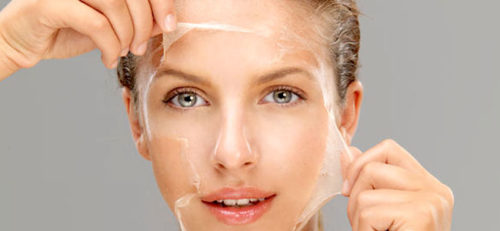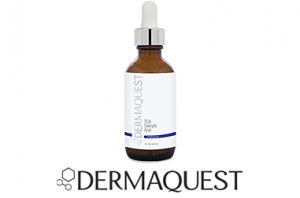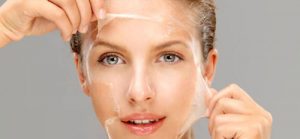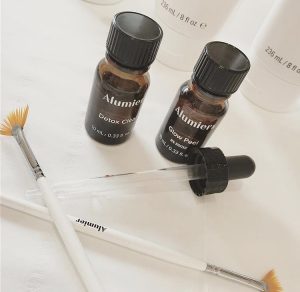What is a Chemical Peel?
Simply put, a Chemical peeling agent (usually an acid) decreases the pH in the skin, loosening the connection between dead skin cells in the Epidermis, inducing exfoliation and stimulating new cell growth within the Dermis. As a result, the skin’s growth cycle is sped up causing the top layers of the Epidermis to shed, revealing a smoother, more radiant, improved complexion. If you choose the peel process regularly the skin will adjust to this process and rejuvenate itself – just like younger skin.
What are the benefits of a Chemical Peel?
Chemical peels can be used to treat or improve many different skin concerns including pigmentation, fine lines and wrinkles, skin tone, skin texture, pore size, acne, dryness and rosacea. More general benefits include a fresher, brighter appearance with skin left glowing, firmer and clearer. Chemical peels can also thicken the epidermis, increase dermal volume and stimulate collagen. Lastly, as Peels remove the outer dead layers of the stratum corneum, the booster ingredients applied post peel are better absorbed into the skin.
What areas of the body can a Chemical Peel be performed?
Usually a Chemical Peel is performed on the face but certain treatments can also be performed on the neck and décolleté, back and hands.
How are Chemical Peels classified?
Chemical Peels can be classified as Superficial, Medium or Deep, depending on the type of ingredients used, their concentrations and the pH of the formulation. Superficial peels exfoliate to various levels of the epidermis, Medium-depth peels treat through the papillary dermis and Deep Peels to the mid-reticular dermis.
Here at the clinic we only perform Superficial to Medium peels, with carefully controlled ingredients and procedures. This minimises the downtime for our clients and reduces the risk of unwanted side effects. Lots of first-time clients think of a Chemical Peel and imagine a scene off the TV programme ‘10 Years Younger’ with severely red skin and months of downtime! These would be classed as Deep peels and are not performed at our Clinic.
What are common Peeling Agents?
Some common peeling ingredients include Retinols, Trichloroacetic Acid (TCA), Alpha-Hydroxy Acids (AHA) and Beta-Hydroxy Acids (BHA). AHA’s include Glycolic Acid derived from sugar cane, Lactic acid derived from milk, Malic Acid derived from apples and pears, Tartaric acid derived from grapes and Mandelic Acid derived from bitter almonds. The only BHA is Salicylic Acid, related to Aspirin.
Chemical peels can be suited and tailored towards different skin types and concerns – one peel certainly doesn’t suit all, therefore it is always important to have a trained skincare professional deliver these treatments in a clinical setting to avoid adverse reactions or side effects.
What is an Enzyme Peel?
Like a Chemical Peel an Enzyme treatment is used to improve the texture and appearance in the skin and can be a lovely alternative to a Chemical Peel, a great introduction to Aesthetic treatments for a first-time client. Enzymes are applied to the skin, which loosen the connections between dead skin cells, inducing exfoliation and stimulating new cell growth. This process causes superficial layers of dead skin to peel off, revealing a smoother and more radiant complexion. Enzyme peels both nourish and exfoliate the skin and are usually made with fruit enzymes. The most popular fruit enzymes are papain, found in papayas, and bromelain, found in pineapple.
What is the treatment process?
When you come to the clinic for a Chemical or Enzyme Peel treatment, we will always start with a full consultation and detailed skin analysis, so we can gather as much information as possible about your skin concerns, expectations, desired outcomes and your current skin routine. Along with a visual assessment of your skin this will allow us to determine the best combination of Peeling agents for you and what Homecare products to prescribe. We will then run through the full treatment procedure and answer any questions you may have before we proceed.
During the treatment we will cleanse and prep the skin before any acids or peeling agents are applied. In certain treatments, several layers of the peel can be used but we will always go at your own pace and only carry on if you are comfortable for us to do so. After the peel part of the treatment, post products are chosen and applied to suit your skin, hydrate and protect against harmful UVA and UVB rays.
What happens after the treatment?
After your treatment we will arm you with detailed aftercare advice to ensure you get maximum results with minimal risks. We will also advise you on suitable aftercare products as a treatment is most effective when the results are maintained and enhanced at home. Beautiful skin does not happen overnight therefore sometimes a course of treatment is recommended depending on the skin concern or result required. A single chemical peel can provide the immediate effect of bright and radiant skin. However, more significant results in treating textural issues, fine lines and inflamed acne can take time.
The downtime for every peel varies and can be anything from a couple of days of minor flaking to 7 days of full skin shedding. The most important thing is not to pull or pick the skin as this can caused post inflammatory hyper-pigmentation and leave marks on the skin. Full aftercare advice and the peeling process will be discussed with your practitioner.
Click on our Chemical Peel page to see a full list of the peels we offer at the Clinic or book in for a Consultation!





